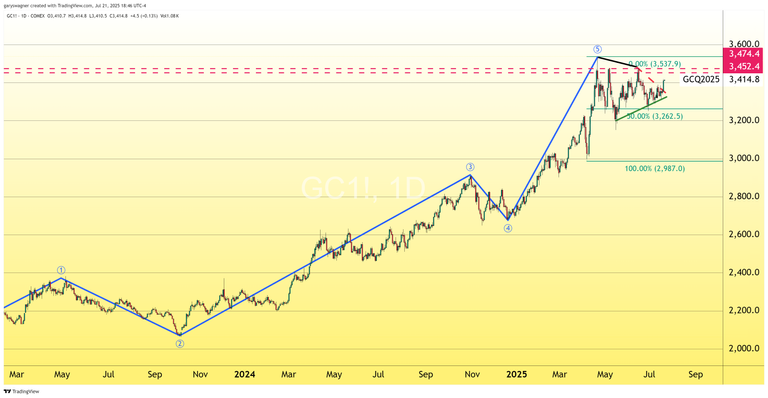Gold markets experienced their strongest performance in more than a month as multiple macroeconomic factors converged to drive precious metals demand. The front-month gold futures contract closed 1.5% higher at $3,401.90 per troy ounce, with spot prices surging past $3,390 to reach levels not seen since mid-June.

The primary catalyst for gold's advance was a notable weakening in the U.S. dollar, which declined sharply across major currency pairs. The ICE Dollar Index fell 0.62 points to 97.86, providing fundamental support for dollar-denominated commodities. This currency weakness coincided with a broad retreat in Treasury yields, as the two-year note yield dropped 2.6 basis points to 3.854%, while the benchmark 10-year Treasury yield declined 5.7 basis points to 4.366%.
The combination of dollar weakness and falling yields created an ideal environment for gold, which benefits from reduced opportunity costs when interest-bearing alternatives become less attractive. Safe-haven demand further amplified the move as escalating trade tensions between the United States and its major trading partners heightened market uncertainty.
Commerce Secretary Howard Lutnick's recent statements have added urgency to ongoing trade negotiations. While expressing optimism about reaching an agreement with the European Union, Lutnick emphasized that the August 1 tariff deadline represents a "hard deadline" for negotiations. He reaffirmed that the administration's 10% baseline tariff would remain in place throughout the negotiation process, underscoring the administration's commitment to its trade policy framework.
These developments follow President Trump's formal notification to key trading partners earlier this month, detailing specific tariff rates that would take effect absent successful negotiations. The European Union has responded by preparing countermeasures against potential U.S. tariffs, as prospects for a mutually beneficial trade agreement appear increasingly uncertain.
Adding to market uncertainty, monetary policy expectations continue to evolve. Traders are currently pricing approximately a 60% probability of a Federal Reserve rate cut in September, reflecting growing speculation about potential leadership changes at the central bank and broader institutional reforms. This dovish shift in rate expectations has contributed to the dollar's weakness and Treasury yield decline, both supportive factors for gold prices.
The confluence of geopolitical tensions, currency dynamics, and shifting monetary policy expectations has created a favorable backdrop for precious metals. As trade negotiations approach critical deadlines and central bank policy remains in flux, gold's traditional role as a hedge against uncertainty appears to be reasserting itself in current market conditions.
Wishing you as always good trading,

